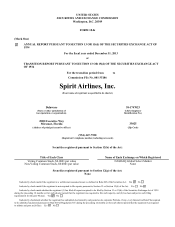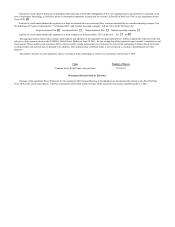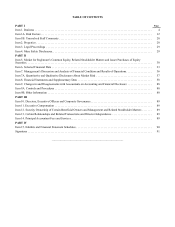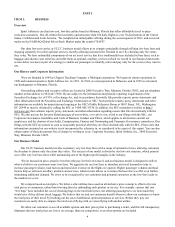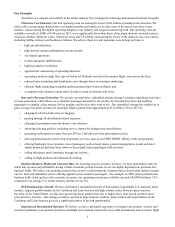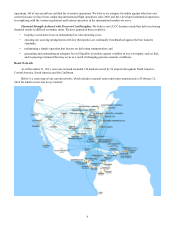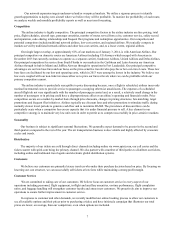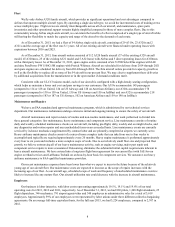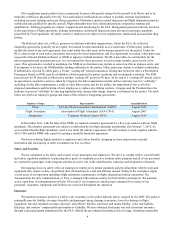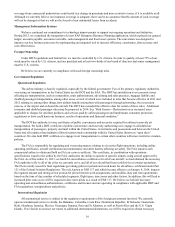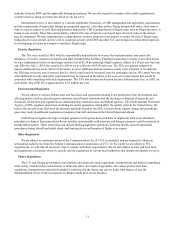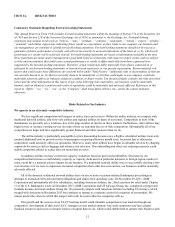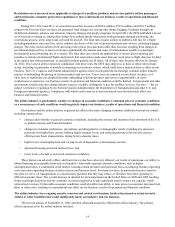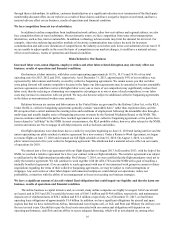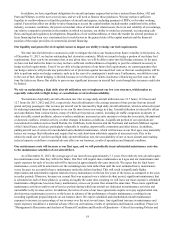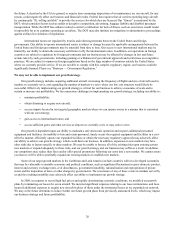Spirit Airlines 2013 Annual Report Download - page 10
Download and view the complete annual report
Please find page 10 of the 2013 Spirit Airlines annual report below. You can navigate through the pages in the report by either clicking on the pages listed below, or by using the keyword search tool below to find specific information within the annual report.10
coverage from commercial underwriters could result in a change in premiums and more restrictive terms, if it is available at all.
Although we currently believe our insurance coverage is adequate, there can be no assurance that the amount of such coverage
will not be changed or that we will not be forced to bear substantial losses from accidents.
Management Information Systems
We have continued our commitment to technology improvements to support our ongoing operations and initiatives.
During 2013, we completed the integration of a new SAP Enterprise Resource Planning application, which replaced our general
ledger, accounts payable, accounts receivable, cash management and fixed asset systems. The conversion was designed to
improve our key business processes by implementing an integrated tool to increase efficiency, consistency, data accuracy and
cost effectiveness.
Foreign Ownership
Under DOT regulations and federal law, we must be controlled by U.S. citizens. In order to qualify, at least 75% of our
stock must be voted by U.S. citizens, and our president and at least two-thirds of our board of directors and senior management
must be U.S. citizens.
We believe we are currently in compliance with such foreign ownership rules.
Government Regulation
Operational Regulation
The airline industry is heavily regulated, especially by the federal government. Two of the primary regulatory authorities
overseeing air transportation in the United States are the DOT and the FAA. The DOT has jurisdiction over economic issues
affecting air transportation, such as competition, route authorizations, advertising and sales practices, baggage liability and
disabled passenger transportation, among other areas, several of which were included in rules that became effective in 2011 and
2012 relating to, among other things, how airlines handle interactions with passengers through advertising, the reservation
process, at the airport and on board the aircraft. The DOT has extended the effective date for certain of these rules. Additional
consumer and disabled passenger rules may be proposed in 2014. See “Risk Factors—Restrictions on or increased taxes
applicable to charges for ancillary products and services paid by airline passengers and burdensome consumer protection
regulations or laws could harm our business, results of operations and financial condition.”
The DOT has authority to issue certificates of public convenience and necessity required for airlines to provide air
transportation. We hold a DOT certificate of public convenience and necessity authorizing us to engage in scheduled air
transportation of passengers, property and mail within the United States, its territories and possessions and between the United
States and all countries that maintain a liberal aviation trade relationship with the United States (known as “open skies”
countries). We also hold DOT certificates to engage in air transportation to certain other countries with more restrictive aviation
policies.
The FAA is responsible for regulating and overseeing matters relating to air carrier flight operations, including airline
operating certificates, aircraft certification and maintenance and other matters affecting air safety. The FAA requires each
commercial airline to obtain and hold an FAA air carrier certificate. This certificate, in combination with operations
specifications issued to the airline by the FAA, authorizes the airline to operate at specific airports using aircraft approved by
the FAA. As of December 31, 2013, we had FAA airworthiness certificates for all of our aircraft, we had obtained the necessary
FAA authority to fly to all of the cities we currently serve, and all of our aircraft had been certified for overwater operations.
The FAA recently issued its final regulations governing pilot rest periods and work hours for all airlines certificated under Part
121 of the Federal Aviation Regulations. The rule, known as FAR 117 and which became effective on January 4, 2014, impacts
the required amount and timing of rest periods for pilots between work assignments, and modifies duty and rest requirements
based on the time of day, number of scheduled segments, flight types, time zones and other factors. In addition, this will lead to
increased pilot costs as we will be required to hire more pilots as a result of FAR 117. We believe we hold all necessary
operating and airworthiness authorizations, certificates and licenses and are operating in compliance with applicable DOT and
FAA regulations, interpretations and policies.
International Regulation
All international service is subject to the regulatory requirements of the foreign government involved. We currently
operate international service to Aruba, the Bahamas, Colombia, Costa Rica, Dominican Republic, El Salvador, Guatemala,
Haiti, Honduras, Jamaica, Mexico, Nicaragua, Panama, Peru and St. Maarten, as well as Puerto Rico and the U.S. Virgin
Islands. If we decide to increase our routes to additional international destinations, we will be required to obtain necessary

